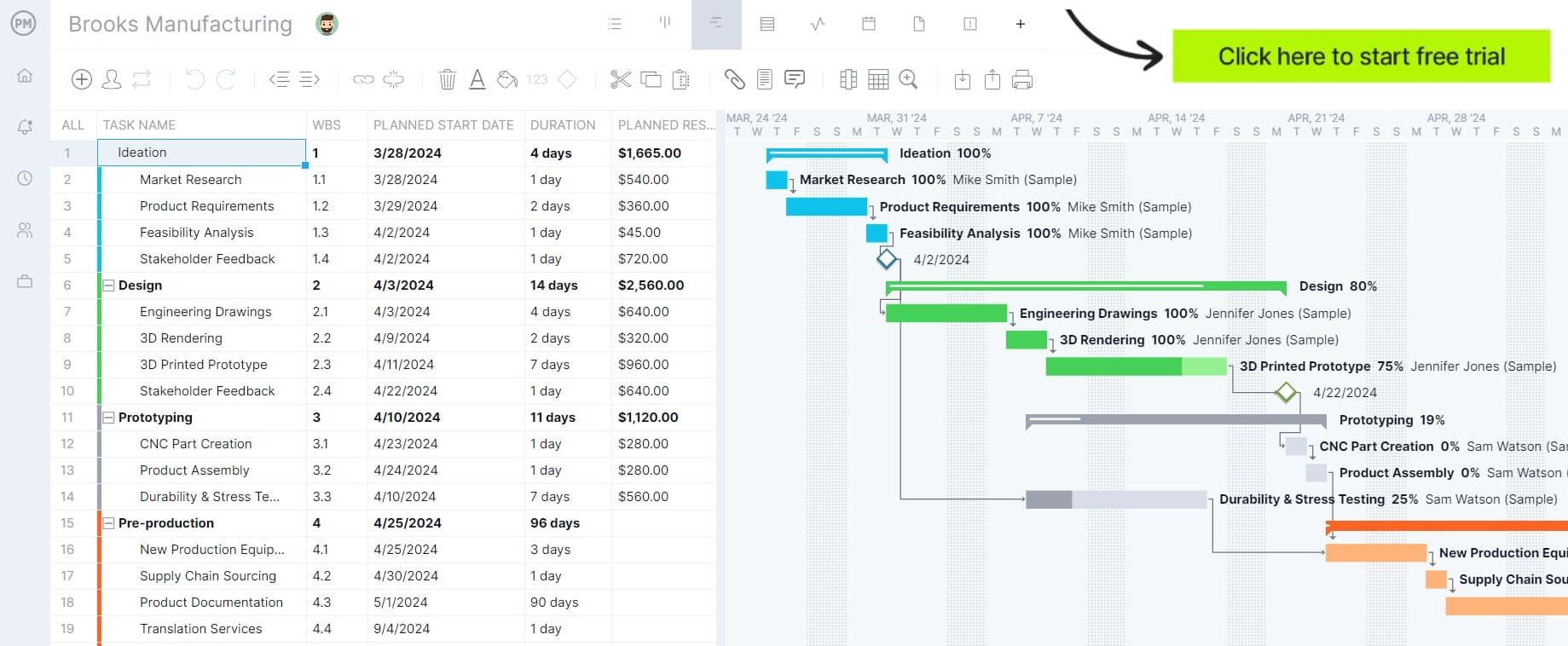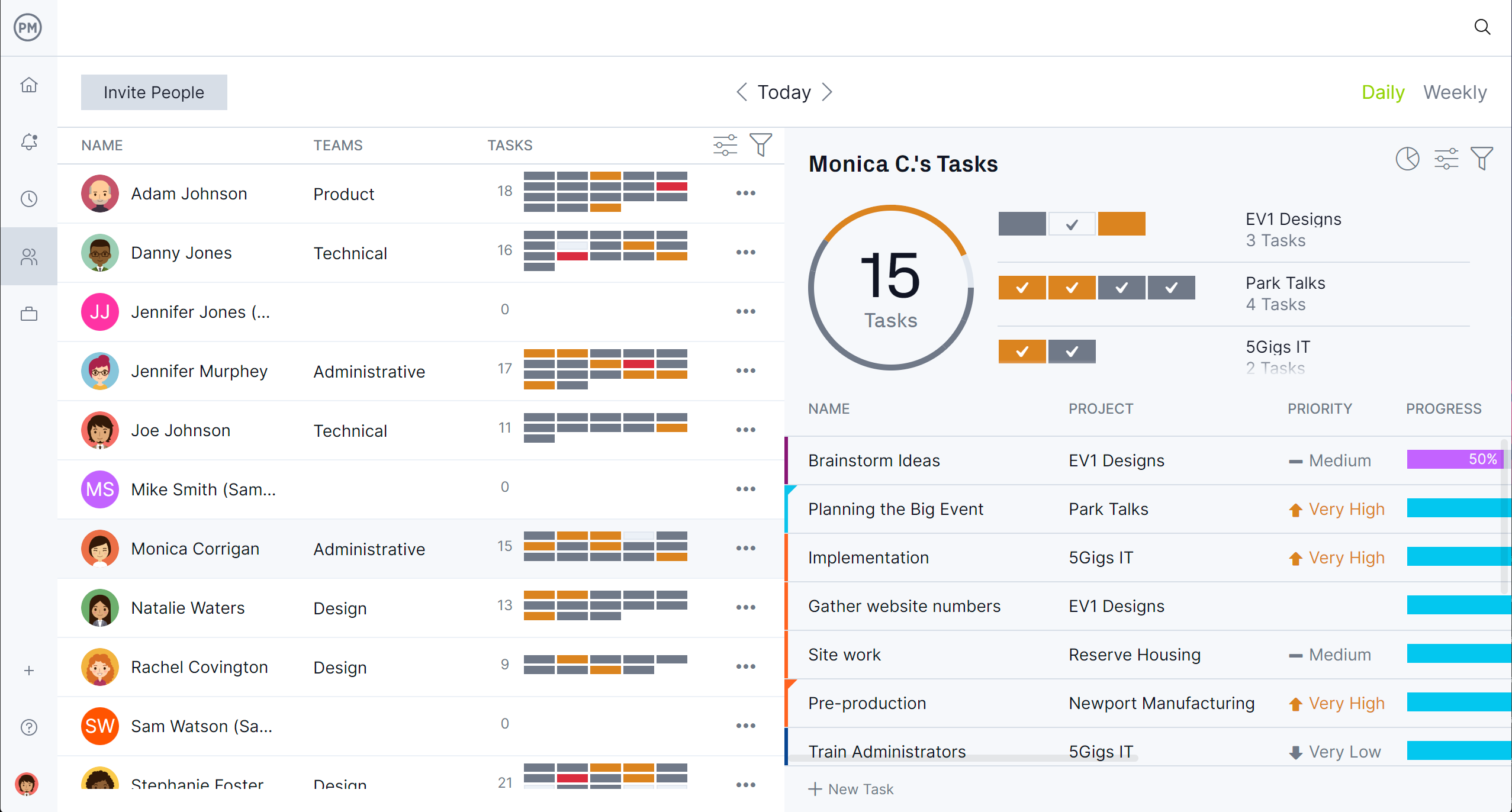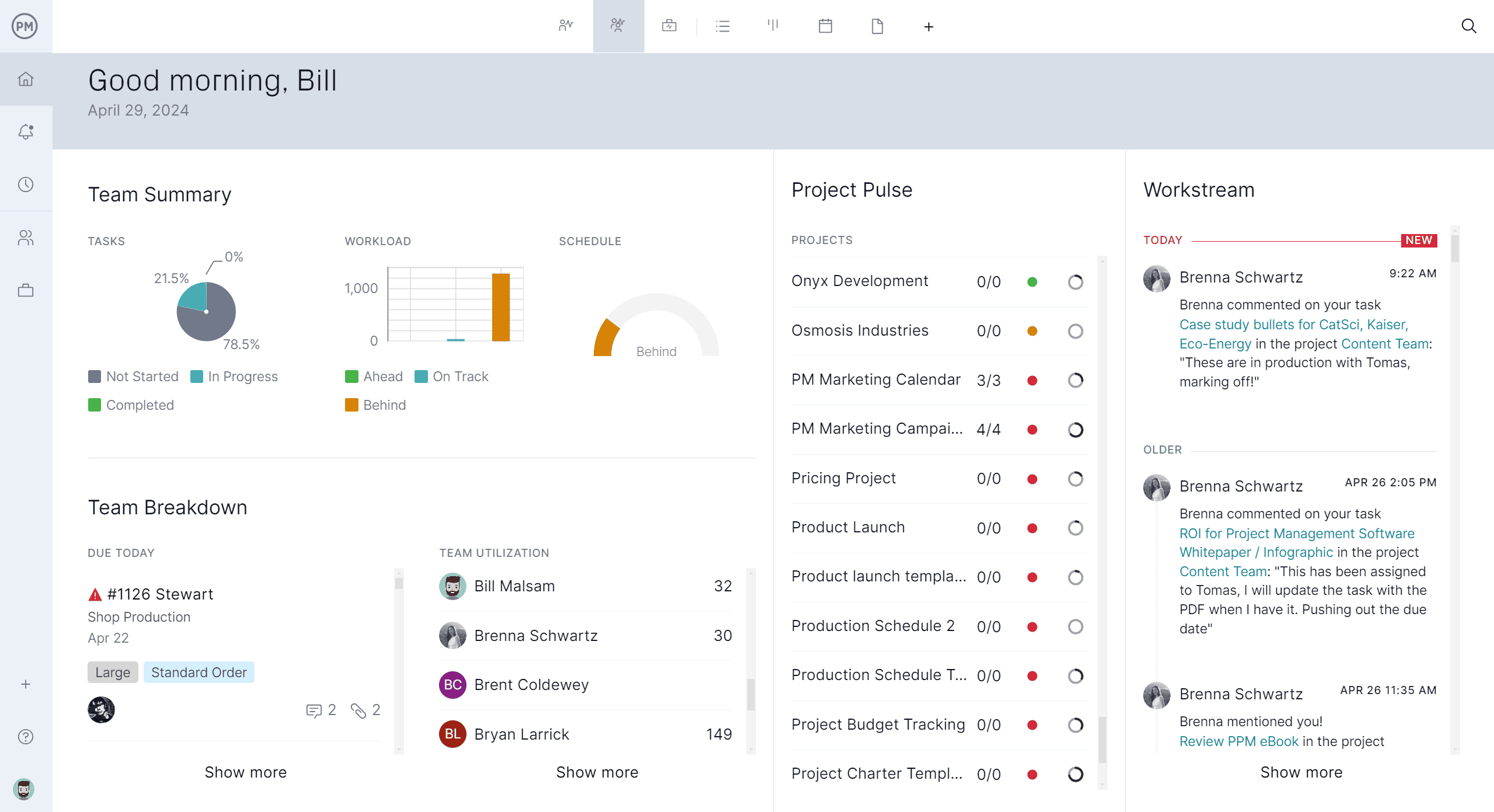Manufacturers can’t rely on reactive planning. Success depends on setting clear production goals that guide operations, streamline workflows and optimize resources. These goals serve as the backbone of continuous improvement efforts, ensuring every department works toward the same operational benchmarks. From meeting demand and improving throughput to reducing waste and controlling costs, well-defined production objectives allow teams to stay aligned and maintain a steady pace toward growth.
Beyond improving performance, production goals help manufacturers identify potential bottlenecks before they escalate into costly delays. Whether it’s increasing output, tightening quality control, shortening lead times or improving sustainability metrics, these targets make it possible to measure progress and drive consistent results. With evolving market conditions and rising customer expectations, having actionable production targets isn’t just beneficial—it’s essential for long-term success.
What Are Production Goals?
Production goals outline the specific objectives a manufacturing operation aims to achieve within a given timeframe. They define desired outcomes across key performance areas such as output volume, efficiency, quality, lead time, cost management and safety. These targets guide production teams in managing resources effectively, minimizing waste and ensuring delivery commitments are consistently met. Unlike broader strategic plans, production goals are tangible and measurable, giving managers a clear standard for success.
These objectives are typically informed by market demand, capacity planning and operational benchmarks. They provide structure to production schedules and allow managers to track performance against predetermined standards. By setting realistic yet ambitious production targets, manufacturers can ensure operations are not only efficient but also capable of meeting future challenges as customer expectations and competitive pressures grow.
Project management software plays a key role in helping organizations track, adjust and achieve these production goals. By integrating real-time data, automated scheduling and analytics, digital tools provide an unmatched level of control over complex manufacturing processes. This ensures managers can pivot quickly, allocate resources intelligently and maintain progress toward performance milestones.
ProjectManager, a leading project and production management tool, helps manufacturers align operations with business strategy through features like Gantt charts, workload management, dashboards and detailed reporting. These capabilities provide the visibility and control needed to turn high-level goals into executable, trackable plans that deliver measurable results. Get started with ProjectManager for free.


Production Goals vs. Production KPIs
Production goals define what a manufacturing operation intends to achieve, while production KPIs measure progress toward those objectives. Goals are forward-looking and strategic, setting targets for output, efficiency, quality, cost and safety. KPIs, on the other hand, are measurable indicators that provide insight into whether those goals are being met. By regularly tracking KPIs, managers can adjust processes, allocate resources and make data-driven decisions to ensure production targets stay on course.
For example, a production goal might be to reduce defects by 20 percent within a quarter. The corresponding KPI could be first-pass yield or defect rate, measured daily or weekly. Together, goals and KPIs create a feedback loop where performance data informs improvements and keeps teams focused on the priorities that matter most. This alignment is essential for operational excellence and achieving manufacturing efficiency.
Main Types of Production Goals
Production goals can be categorized into several types that address different aspects of manufacturing operations. Each type has distinct objectives and metrics, and understanding these categories helps managers establish targets, allocate resources and track progress effectively. The following sections outline six major types of production goals common in modern manufacturing.
1. Output & Volume Targets
Output and volume targets are production goals focused on achieving specific quantities within a defined period. They measure how much product is produced and whether it meets demand requirements. By setting daily quotas, batch size targets, capacity utilization levels and backlog reduction objectives, manufacturers ensure that production stays aligned with customer expectations and market demand.
Daily production quota: Daily quotas define the minimum number of units that must be produced per shift or day to stay on track with overall production targets. This ensures a consistent workflow and prevents bottlenecks from delaying orders.
Batch size optimization: Optimizing batch sizes balances setup time with production efficiency. Larger batches can reduce changeovers, while smaller batches can increase flexibility to meet varying demand.
Production capacity utilization: Tracking capacity ensures machines and labor are used effectively. Higher utilization without overloading resources maximizes output and supports cost-effective manufacturing.
Demand fulfillment goals: These targets ensure that production aligns with customer demand. Meeting fulfillment targets reduces delays, improves customer satisfaction and strengthens business reliability.
Order backlog reduction: Focusing on clearing backlog orders prevents delays, improves cash flow and maintains a smooth production cycle, avoiding unnecessary pressure on teams and equipment.
KPIs for These Production Goals
- Production Volume: Measures actual units produced against the target.
- Capacity Utilization: Percentage of total capacity used to achieve production targets.
- TEEP (Total Effective Equipment Performance): Checks how closely operations are running at full 24/7 capacity.
2. Efficiency Targets
Efficiency targets focus on how effectively production resources are used to achieve desired output. Unlike output goals that measure volume, efficiency goals assess performance relative to time, labor, equipment and material usage. By setting targets for throughput, downtime reduction, line balancing and overall equipment effectiveness, manufacturers can reduce waste, improve speed and increase productivity without sacrificing quality.
Manufacturing throughput rate: This target tracks how many units are produced per hour, shift or day, measuring the efficiency of the production line. Higher throughput indicates optimized processes and reduced bottlenecks.
Downtime reduction: Downtime, whether planned or unplanned, directly affects efficiency. Targets focus on minimizing machine stoppages and delays to maintain continuous flow and achieve production goals.
Line balancing efficiency: Properly balancing tasks across workstations reduces idle time and prevents overloading individual stations. This ensures smooth operations and maximizes overall throughput.
Overall Equipment Effectiveness (OEE) improvement: OEE combines availability, performance and quality to give a holistic view of how well equipment contributes to production efficiency. Improving OEE directly supports efficiency goals.
Resource allocation targets: Setting goals for labor and material usage ensures optimal deployment of resources, preventing overuse or underutilization while maintaining production speed and quality.
KPIs for These Production Goals
- Production Downtime: Monitors lost production hours compared to the target.
- OEE (Overall Equipment Effectiveness): A standard measure for equipment efficiency, performance and quality.
- OOE (Overall Operations Effectiveness): Extends OEE to include all operational losses beyond equipment, such as process inefficiencies.
- Changeover Time: Tracks time required to switch between products, supporting lean and SMED improvements.
- Work-In-Process (WIP): Monitors inventory in production, minimizing excess or stuck units.
3. Quality Targets
Quality targets focus on maintaining high standards throughout the production process to ensure that finished products meet specifications and customer expectations. These production goals aim to reduce defects, minimize rework, improve first-pass yield and ultimately deliver products that satisfy quality benchmarks. Consistently hitting quality targets reduces waste, lowers costs associated with returns or repairs and strengthens brand reputation in competitive markets.
Defect per million opportunities (DPMO): Measures the number of defects in a given number of units, helping managers track and reduce error rates across the production process. Lower DPMO reflects better process control and higher quality output.
Rework reduction goals: These targets aim to minimize the need for redoing work due to errors or nonconformance. Reducing rework saves time, labor, materials and keeps production schedules on track.
Customer complaint rate: Monitoring complaints provides feedback on product quality as experienced by end users. Targets focus on minimizing complaints to improve satisfaction and loyalty.
First-pass yield (FPY) benchmark: Tracks the percentage of products that pass inspection the first time without rework. High FPY indicates efficient processes and consistent quality.
Zero-defect manufacturing: These ambitious targets aim to eliminate all defects in production, fostering a culture of continuous improvement and precision manufacturing.
KPIs for These Production Goals
- First Pass Yield (FPY): Percentage of units meeting quality standards the first time.
- First Time Right (FTR): Similar to FPY but applied more broadly to processes and services.
- Scrap Rate: Percentage of material wasted due to defects or nonconformance.
Related: 10 Best Production Planning Software
4. Time-Based Targets
Time-based targets focus on reducing production cycle times, lead times and changeover durations to increase responsiveness and improve overall throughput. These production goals ensure that manufacturing processes keep pace with demand, allowing products to reach customers faster without compromising quality. By tracking time-related metrics, managers can identify bottlenecks, optimize scheduling and align production with market requirements efficiently.
Cycle time reduction: Shortening the time it takes to complete one production cycle helps improve throughput, reduce bottlenecks and accelerate overall production performance. Continuous monitoring and process improvements are essential to achieve these targets.
Lead time optimization: Minimizing the time between order placement and delivery improves customer satisfaction, allows for more flexible production planning and helps manufacturers respond to market changes swiftly.
Takt time alignment with demand: Takt time represents the pace at which products must be produced to meet customer demand. Aligning production with takt time ensures resources are used efficiently and orders are fulfilled consistently.
Just-in-Time (JIT) Production Goals: JIT aims to produce only what is needed when it is needed, reducing inventory costs and minimizing waste. Meeting JIT targets requires precise scheduling and responsive production processes.
On-time-in-full (OTIF) delivery: This target measures whether orders are delivered as promised, both in terms of timing and quantity. Hitting OTIF targets enhances customer trust and strengthens supply chain reliability.
KPIs for These Production Goals
- Lead Time (LT): Measures the time from order receipt to delivery completion.
- Cycle Time: Tracks the total time required to complete the production of a unit.
- Takt Time: Aligns production pace with customer demand to maintain efficiency.
- MTBF (Mean Time Between Failure): Monitors the average operating time between equipment failures, supporting continuous production flow.
5. Cost Targets
Cost targets focus on controlling expenses throughout the production process to maximize profitability. These production goals aim to reduce per-unit costs, optimize overhead, manage raw material expenses, improve energy efficiency and streamline labor utilization. By setting clear cost objectives, manufacturers can maintain competitive pricing, protect profit margins and make informed decisions about investments in equipment or workforce expansion.
Cost-per-unit reduction: Monitoring and reducing the cost to produce each unit ensures that manufacturing operations remain profitable while maintaining quality and output targets.
Overhead absorption targets: These targets ensure that indirect costs, such as utilities, rent and administrative expenses, are allocated efficiently across production, preventing cost overruns and improving overall efficiency.
Raw material cost control: Tracking material usage and negotiating favorable supplier terms helps reduce costs and ensures that production targets are met without excessive spending.
Energy efficiency in production: Reducing energy consumption through process improvements, better equipment management and optimized scheduling supports cost savings and sustainability goals.
Labor cost optimization: Efficiently assigning staff, tracking hours and minimizing overtime ensures labor costs align with production goals while maintaining throughput and quality.
KPIs for These Production Goals
- Cost Per Unit (CPU): Measures the total production cost divided by the number of units produced.
- Cost of Goods Manufactured (COGM): Tracks all production-related expenses to evaluate operational efficiency.
- Cost of Goods Sold (COGS): Ties production costs to revenue to assess profitability.
- Maintenance Unit Cost: Monitors maintenance spending relative to equipment output to control costs effectively.
- Return on Assets (ROA): Evaluates how efficiently assets generate profit, aligning resource use with production goals.
6. Safety & Sustainability Targets
Safety and sustainability targets are crucial production goals that ensure the well-being of employees and the long-term viability of manufacturing operations. These goals aim to reduce workplace accidents, minimize environmental impact and comply with regulatory standards. By integrating safety and sustainability into production objectives, manufacturers can protect staff, reduce risk, lower costs related to incidents and environmental penalties and build a positive reputation with customers and stakeholders.
Lost Time Injury Frequency Rate (LTIFR) reduction: Setting targets to reduce workplace injuries ensures safer operations and minimizes production disruptions caused by accidents. Tracking LTIFR helps managers proactively implement safety measures.
Incident-free workdays: Monitoring the number of consecutive days without accidents or safety incidents promotes a culture of safety awareness and encourages continuous improvement.
Waste-to-landfill reduction targets: Focusing on minimizing waste supports sustainability initiatives, lowers disposal costs and enhances resource efficiency.
Carbon footprint per unit manufactured: Tracking emissions per unit helps organizations measure environmental impact and identify opportunities to implement greener production practices.
ISO 14001 compliance goals: Achieving and maintaining compliance with environmental management standards ensures processes meet global regulatory requirements while fostering sustainability.
KPIs for These Production Goals
- Lost Time Injury Frequency Rate (LTIFR): Monitors workplace safety performance and tracks progress toward injury reduction goals.
- Incident-Free Days: Measures continuous safe operation periods without accidents.
- Waste Reduction Rate: Quantifies the reduction in landfill waste per unit produced.
- Carbon Emissions per Unit: Tracks the environmental impact of production output.
- ISO 14001 Audit Results: Assesses compliance with environmental management standards.
Free Production Management Templates
Efficient production operations rely on structured planning and tracking. Using production management templates can help teams standardize processes, monitor progress and meet production goals more effectively. These ready-made templates provide a framework for scheduling, inventory management and process documentation, allowing managers to focus on decision-making rather than building systems from scratch. Templates are particularly useful for aligning daily activities with broader production targets and improving collaboration across teams.
Production Schedule Template
This template helps managers plan daily, weekly and monthly production activities. It provides a clear visual timeline of tasks, deadlines and resource assignments, ensuring that operations stay on track. By mapping out production schedules, managers can prevent bottlenecks, balance workloads and adjust priorities quickly when unexpected changes occur.
Inventory Template
The inventory template allows manufacturers to monitor raw materials, work-in-progress and finished goods in real time. Tracking inventory levels helps prevent stockouts, overstocking and material wastage. It also provides insights into reorder points and safety stock, ensuring that production can continue smoothly without delays caused by missing components.
SIPOC Template
This free SIPOC (Suppliers, Inputs, Process, Outputs, Customers) template helps document and standardize production processes. It provides a high-level overview of the inputs, outputs and key process steps, supporting continuous improvement initiatives. This template is especially valuable for identifying inefficiencies, understanding process flow and aligning production goals with overall business objectives.
How ProjectManager Helps Manufacturers Meet Production Goals
ProjectManager provides manufacturers with the tools they need to monitor, plan and execute production activities efficiently. With multiple work management views, such as Gantt charts, task lists, kanban boards and calendar views, teams can visualize production schedules from different perspectives. Managers can track tasks, deadlines and dependencies in real time, ensuring every team member understands priorities and workflow.
The ability to switch between views provides flexibility in planning and monitoring production activities. Teams can instantly see progress, adjust workloads and respond to delays, ensuring that production goals are always in focus and operations remain aligned with targets. Our software transforms complex manufacturing processes into manageable workflows, enabling faster decision-making and continuous improvement. See how our software can support your manufacturing initiatives in the short video below.
Robust Resource Management and Cost Tracking Tools
ProjectManager enables managers to allocate staff, machinery and materials efficiently using workload charts and resource planning tools. Cost tracking features allow tracking of labor hours, material usage and overall project budgets.
By combining resource allocation with financial monitoring, managers can optimize efficiency, prevent overuse of resources and maintain profitability. These tools help ensure that production targets are met while keeping costs under control, providing a comprehensive overview of both operational and financial performance.
Real-time Project Dashboards and Reports
ProjectManager’s dashboards offer a live visual representation of production progress, resource utilization and overall project health. Customizable reports provide detailed insights into key metrics, highlighting trends, bottlenecks and areas for improvement.
Managers can use these analytics to make data-driven decisions, forecast potential issues and adjust production plans proactively. Real-time dashboards and reports keep teams aligned, improve accountability and provide the transparency needed to consistently achieve production goals and targets.
Related Content
Explore more resources to improve your production operations management. Below are links to articles on project and manufacturing KPIs, metrics, software and more.
ProjectManager is online project and portfolio management software that connects teams, whether they’re in the office or out in the field. They can share files, comment at the task level and stay updated with email and in-app notifications. Join teams at Avis, Nestle and Siemens who are using our software to deliver successful projects. Get started with ProjectManager today for free.





